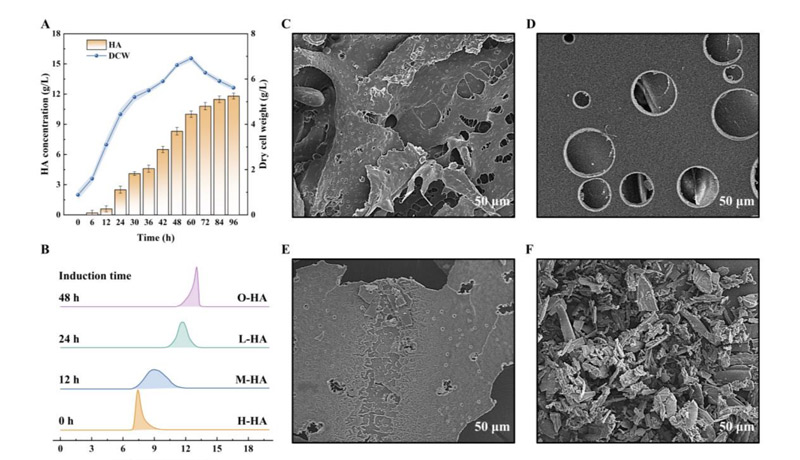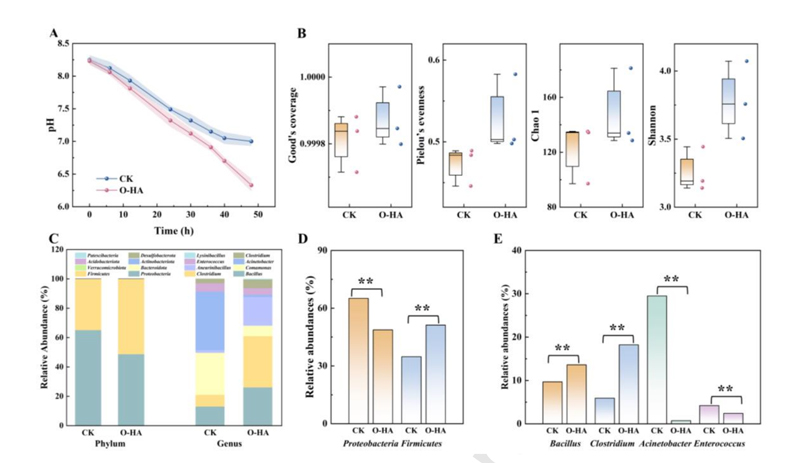In the field of biomedicine, Hyaluronic Acid (HA) is widely used in the medical, cosmetic and food industries due to its unique biological activity and function.
Not only that, its molecular weight is different, its application and effect are also different, such as high molecular weight hyaluronic acid (H-HA) because of its excellent moisture and viscoelasticity, is widely used in cosmetics and drug slow-release carrier;
Medium molecular weight hyaluronic acid (M-HA) is commonly used in eye drops and wound healing.
However, low molecular weight hyaluronic acid (L-HA) and hyaluronic acid oligosaccharide (O-HA) have good effects on immune stimulation, anti-angiogenesis, and promoting bone formation, angiogenesis and immune regulation.
At present, in the industrial production of hyaluronic acid, the method of synthesizing specific molecular weight HA by metabolic engineering of engineered bacteria is becoming more and more common.
In this process, hyaluronidase (HAase) plays a key role in molecular weight regulation by degrading high molecular weight HA into low molecular weight or oligosaccharide forms.
The search for hyaluronidase with higher specificity is crucial for the production of hyaluronic acid with specific molecular weight.
Recently, Li Sha, Qiu Yibin and others from Nanjing University of Technology published “De novo synthesis of hyaluronic acid with Biological Macromolecules” in the International Journal of Biological Macromolecules tailored molecular weights using a new hyaluronidase SthHL “paper.
The research team characterized a new type of hyaluronidase SthHL from Streptomyces thermolilacinus, and successfully obtained HA with different molecular weights after introducing it into Bacillus to construct engineering bacteria and regulate expression.
It provides a new method for custom synthesis of hyaluronic acid.

Through bioinformatics analysis and site-saturation mutations, the researchers revealed the properties of this new hyaluronidase SthHL – its molecular weight is about 21.9 kDa, its key amino acids for catalytic activity are R188 and V192, and it is not active against mannan and chondroitin sulfate, and it is not active at all.
This allows it to specifically degrade hyaluronic acid.
The researchers introduced SthHL into a strain of Bacillus amyloliquefaciens that produces high-molecular weight hyaluronic acid and built engineered bacteria capable of synthesising hyaluronic acid.
By optimizing the culture conditions and induction strategies, the researchers successfully obtained four hyaluronic acids with different molecular weights.

The team performed a detailed characterization of these generated hyaluronic acids.
The surface morphology of hyaluronic acid with different molecular weight observed by scanning electron microscope (SEM).
Rheological analysis shows that these hyaluronic acids have shear-thinning non-Newtonian fluid properties, and the viscosity decreases with the decrease of molecular weight.
The antioxidant activity analysis showed that hyaluronic acid with different molecular weight showed significant scavenging ability to various free radicals and showed obvious dose-effect relationship.
With the increase of HA concentration, free radical scavenging ability generally enhanced, especially O-HA, when the concentration is 5 g/L, its scavenging activity can reach 99.91%.
This provides a strong basis for its application in the field of medicine and health products.
The effect of low molecular weight hyaluronic acid, hyaluronic acid oligosaccharide on the activity of intestinal flora in vitro was also studied.
Through simulated digestion experiments, the researchers found that hyaluronic acid oligosaccharides could reach the large intestine and effectively utilized by intestinal flora after simulated digestion in the mouth, stomach and small intestine.
Finally, the abundance of beneficial bacteria such as Clostridium and Bacillus increased significantly, while the abundance of pathogenic bacteria such as acinetobacter and Enterococcus decreased.
The results showed that the oligosaccharides of hyaluronic acid produced in this way had a good promoting effect on intestinal health.

This study successfully synthesized hyaluronic acid with specific molecular weight by utilizing the high specificity of the new SthHL hyaluronidase combined with one-step fermentation, providing a new idea for the research of industrial production of hyaluronic acid, and providing a theoretical basis for the application of hyaluronic acid in the field of biomedicine.
Although the current yield of hyaluronic acid is relatively low and needs to further optimized, this study provides new ideas for future research in developing more efficient biopharmaceutical production processes and promoting the development of viral vaccines.
References: 1.https://www.sciencedirect.com/science/article/abs/pii/S0141813024101924



